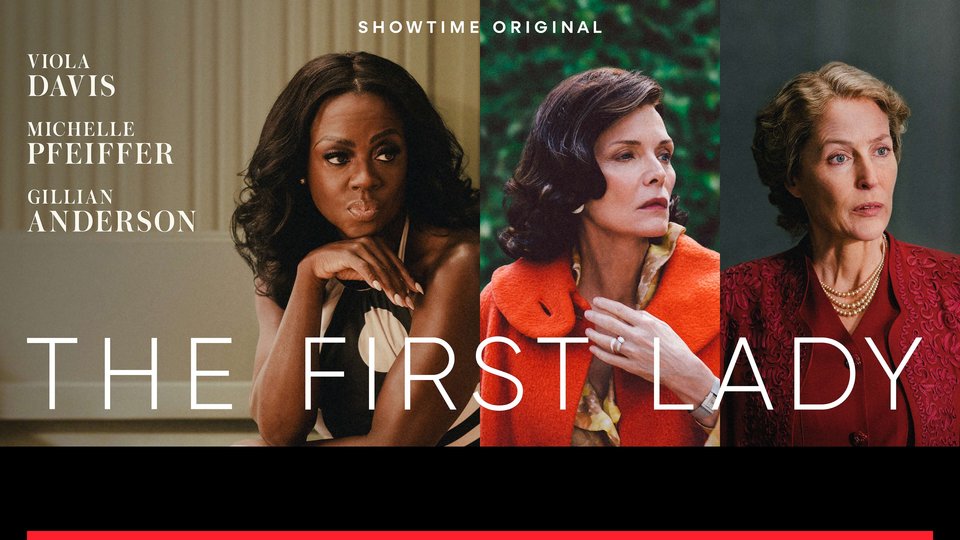This is a tiny slice of Americana – just 41 people, spread over 232 years.
Now a new series views some of the most intriguing: “The First Lady” (9 p.m. Sundays on Showtime, starting on Easter) spends its first season with three women. Michelle Pfeiffer is Betty Ford, Viola Davis is Michelle Obama and Gillian Anderson is Eleanor Roosevelt … who was sort of at the turning point.
“Eleanor was, in my mind, the first modern First Lady,” said Cathy Schulman, who produces the series and wrote the second of this year’s 10 episodes.
Roosevelt expected a West Wing office, Schulman said; she didn’t get one, but became a vital force. “She was the beginning of two really important social movements – women’s rights and de-segregation.”
Others – some obscure – were First Ladies. The 46 presidents have included only one bachelor (James Buchanan) and four widowers (Thomas Jefferson, Andrew Jackson, Chester Arthur and Martin Van Buren).
In a future season, Schulman might go all the way to the start. “I’m kind of, at the moment, obsessing over Martha Washington,” she said. Other possibilities she discussed (during a Television Critics Association virtual press conference) include Dolley Madison, Jacqueline Kennedy, Hillary Clinton … and Edith Wilson, whose husband (Woodrow) was incapacitated by a stroke for the final five months of his presidency. “Not only did she run the country, nobody knew she was running the country.”
Some of this will fascinate a world that hears very little about a Mrs. Putin or a Mr. Thatcher, but keeps hearing about the Americans.
“I don’t have a history with American presidents,” said Susanne Bier, the Denmark native who directed all 10 episodes. So she was “struck by how fascinating it was, being this close to power and still very remote from it – and then being incredibly impactful, but not in a very obvious, visible way.”
These are vivid people, suddenly nudged aside. “They had fully independent lives before they ever went into the White House,” Schulman said. “And then, suddenly, they were told to pick china patterns.”
And no, not all of them cared about dinnerware, Bier said. “Part of the First Lady’s mission is to redecorate the house – which, for Eleanor, was not a particularly pleasurable endeavor.
For Davis, there were many imposing things about becoming Michelle Obama. “First of all, her height.”
Davis is 5-foot-5, Obama is 5-11. Then again, Anderson, 5-3. is playing the 6-foot Roosevelt.
Beyond that, Davis had the challenge of playing someone she’s met in real life, who might watch the show. “I was absolutely terrified,” she said.
Obama is 58, Roosevelt died at 78 in 1962; Ford died at 93 in 2011, almost four decades after reluctantly being a piece of history.
“None of them wanted to be there,” Schulman said. “Eleanor wanted to be there – but only if she could be there as president …. And Betty went into the White House kicking and screaming.”
She had expected to see her husband ease into retirement soon; instead, Gerald Ford became the unelected president. His wife became a strong force for the Equal Rights Amendment and for the problems she faced – breast cancer and (post-presidency) alcohol and pill addiction.
“It’s one thing to be brave in the privacy of your own circumstances,” Pfeiffer said. “Betty Ford did it in front of the whole world and still managed to be fearless, frank and kind.”
Ford also provided intriguing contrasts, Schulman said. “She’s so elegant and so, kind of suave and was a dancer. And everything she does is just so beautiful. And yet, … there’s a rage, as well.”
These are complicated people; Anderson said she couldn’t simply focus on similarities: “I wish there were more similar qualities between me and Eleanor Roosevelt …. I am so selfish and so self-obsessed.”
Well, few people survive a comparison to Eleanor Roosevelt. “She lived and breathed duty,” Anderson said. Even before the White House, there was “the work that she did for the underprivileged. And she started a school …. She was aware of the fact that she was incredibly fortunate and privileged and she spent every waking minute” helping others.
She did have time for friendships. Historians have disagreed on whether Roosevelt’s relationship with writer Lorena Hickok included physical romance; “The First Lady” says it did.
It also says she showed her husband the Henry David Thoreau quote: “Nothing is so much to be feared as fear.” He would soon tell a Depression-time nation that the only thing to fear is fear itself.
